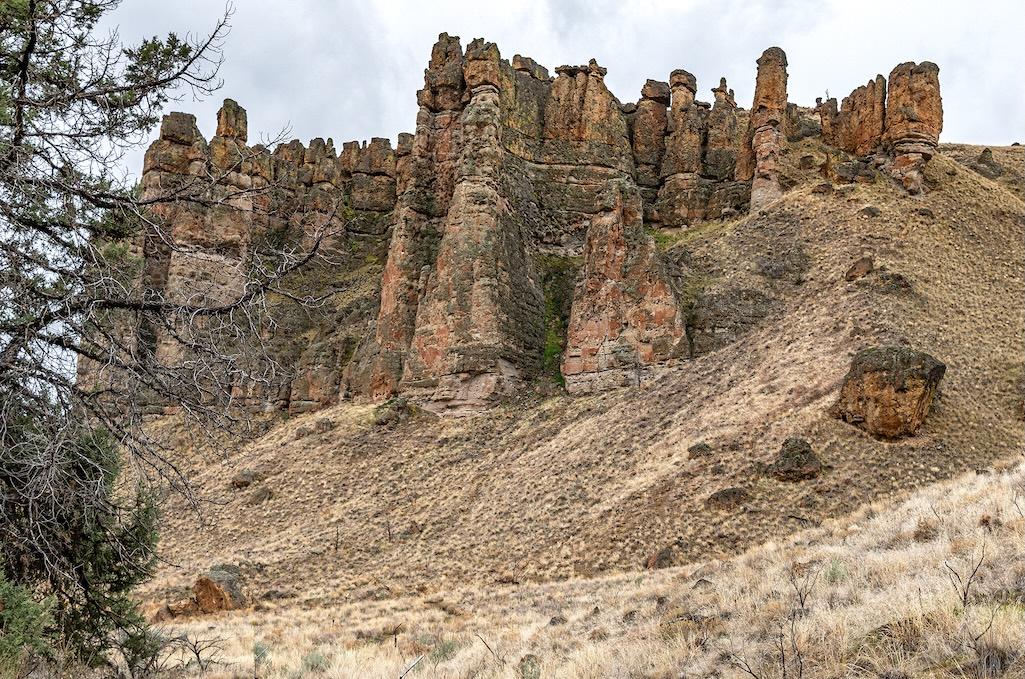
Fossilized animal tracks uncovered at John Day Fossil Beds National Monument/NPS
Fossilized animal tracks dating back 50 million years have been discovered at John Day Fossil Beds National Monument, tracks that offer unprecedented insight into the behaviors of prehistoric animals in what is now central and eastern Oregon.
Using advanced 3D imaging techniques, a team of scientists led by fossil track specialist Conner Bennett identified and analyzed four sets of vertebrate trace fossils—impressions left behind by prehistoric birds, mammals, lizards, and invertebrates. The research, recently published in Palaeontologia Electronica, documents the first known fossil tracks of birds and lizards at the monument and adds important behavioral context to the region’s well-established body fossil record.
“This prehistoric behavior from 50 million years ago is still prevalent today in modern shorebirds,” said Bennett. “It’s fascinating. That is an incredibly long time for a species to exhibit the same foraging patterns as its ancestors.”
The fossilized tracks, recovered from two distinct rock layers, reveal fascinating behaviors and species previously undocumented in the monument’s extensive fossil record:
Birds and Invertebrates (50–39 million years ago): Two small bird tracks discovered alongside invertebrate trails and beak marks suggest ancient shorebirds foraged for food in shallow water—behavior strikingly similar to that seen in modern species.
Lizard Track (approx. 50 million years ago): A rare fossil track featuring clawed, splayed toes indicates a lizard once dashed along a lakebed, marking one of the few known reptile trackways from this time period in North America.
Cat-like Predator (29 million years ago): A set of pawprints found in a volcanic ash layer may belong to a nimravid, a saber-toothed, bobcat-sized predator such as Hoplophoneus. The lack of claw marks supports evidence of retractable claws, similar to modern felines.
Tapir or Rhinoceros Ancestor (29 million years ago): Three-toed, rounded hoofprints are believed to have been made by a large herbivore such as an ancient tapir or rhinoceros.

The tracks were found in the upper Clarno Formation at the park/Rebecca Latson file
“These tracks offer a rare window into ancient ecosystems,” said Dr. Nicholas Famoso, the monument’s paleontology program manager. “They add behavioral context to the body fossils we’ve collected over the years and help us better understand the climate and environmental conditions of prehistoric Oregon.”
The trace fossils—distinct from body fossils like bones and teeth—capture the daily activities of long-extinct animals. Bennett utilized photogrammetry, stitching together thousands of photographs to create 3D models of the tracks, several of which had remained in museum storage since the 1980s.
“The fossil tracks not only help us confirm the existence of these animals in this time and place, but they also tell us how they lived,” said Bennett.
The newly published study, “Following their footsteps: Report of vertebrate fossil tracks from John Day Fossil Beds National Monument, Oregon, USA,” is available at: https://doi.org/10.26879/1413
John Day Fossil Beds National Monument is home to one of the longest and most complete fossil records of plants and animals from the Age of Mammals and Flowering Plants. Encompassing nearly 14,000 acres of protected lands, the park has preserved millions of years of geologic and evolutionary history. The Thomas Condon Paleontology and Visitor Center houses thousands of fossil specimens and features an active research laboratory open to the public.
To learn more, visit JODA Fossil Footprints - John Day Fossil Beds National Monument (U.S. National Park Service) or follow the park on Facebook, Instagram, and X.


 Support Essential Coverage of Essential Places
Support Essential Coverage of Essential Places






